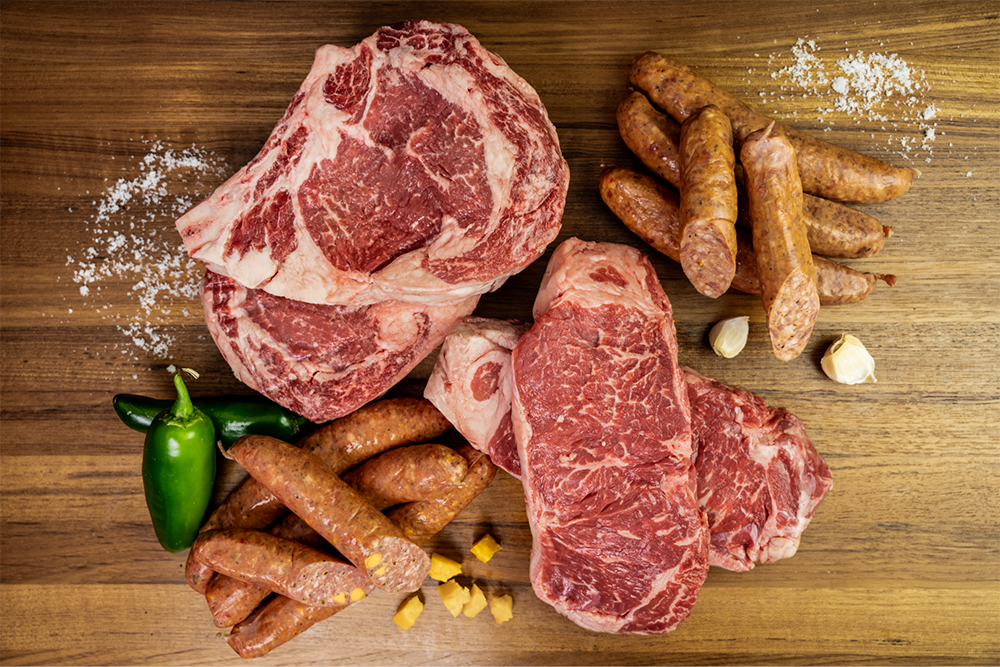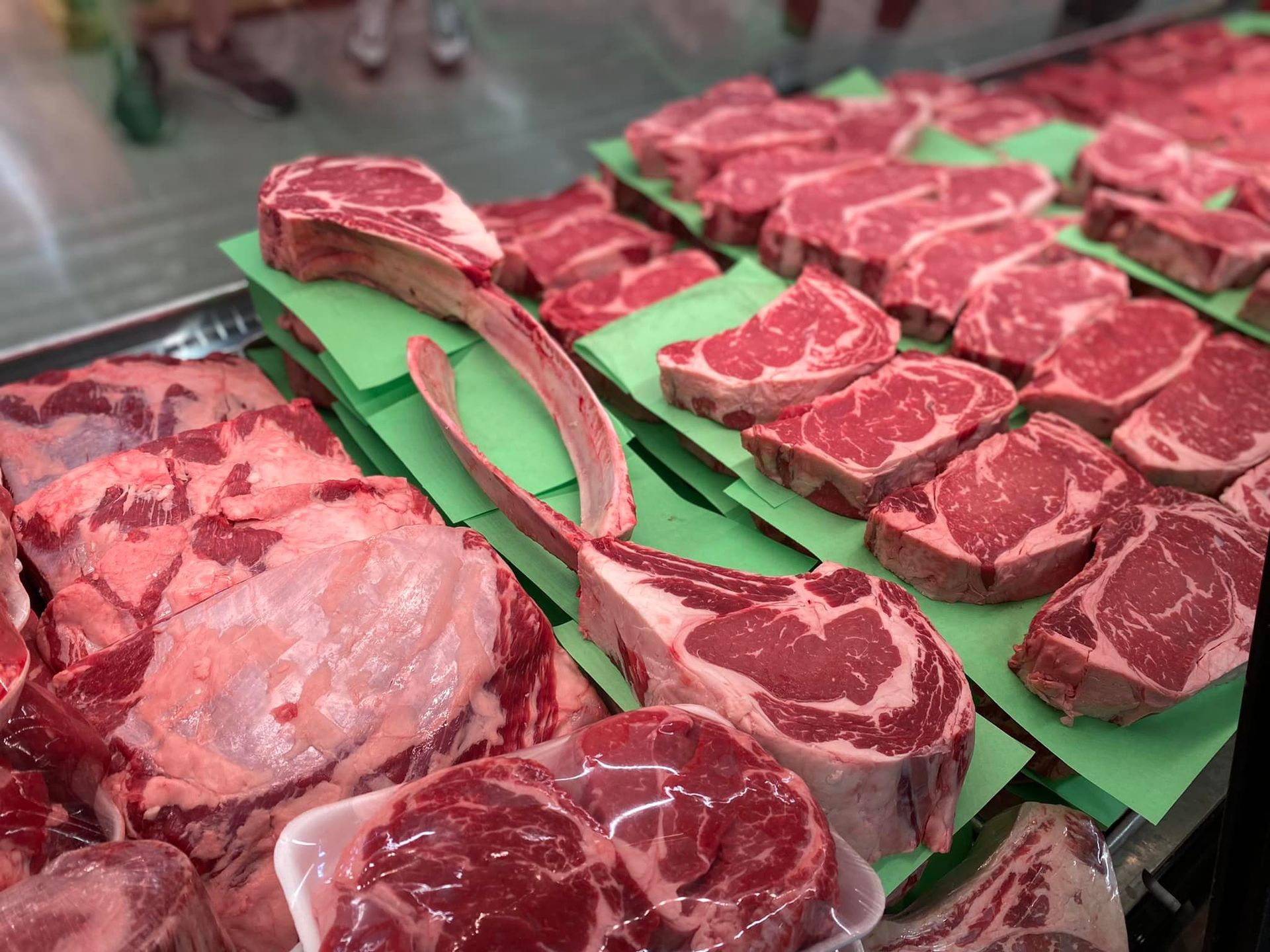Leading Factors to Shop at Bagley Farms Meat Market Edwardsville IL for Costs Meats
Leading Factors to Shop at Bagley Farms Meat Market Edwardsville IL for Costs Meats
Blog Article
Discover the Art of the Butcher's Cut in a Modern Meat Market
In the ever-evolving landscape of modern meat markets, the butcher's cut has actually transcended its conventional roots, combining olden workmanship with modern practices. What really establishes the modern butcher apart is their capability to forge a much deeper link in between consumers and the beginnings of their meat.
Advancement of Butchery Strategies

The mid-20th century saw butchery strategies even more improved by clinical insights right into muscle mass biology and meat aging, enhancing both inflammation and preference. Developments like vacuum cleaner product packaging and refrigeration prolonged item shelf-life, allowing butchers to branch out offerings and boost quality assurance. This period additionally noted the rise of customized tools, such as band saws and meat slicers, which increased precision and efficiency in meat processing.
Digital systems currently help in tracking animal provenance and enhancing cuts to meet specific client preferences. In addition, a rebirth in artisanal butchery has arised, mixing standard abilities with contemporary expertise to provide to customers seeking ethical and lasting meat alternatives.

Comprehending Meat Cuts

Understanding the ins and outs of meat cuts is important for both butchers and consumers looking for quality and value. For butchers, precise cuts reflect skill and respect for the craft, making certain minimal waste and ideal return.
The key categories of meat cuts include primal, sub-primal, and retail cuts. Butchers after that damage these down additionally right into sub-primal cuts, prior to finally generating retail cuts available to consumers, like ribeye or tenderloin.
Comprehending muscular tissue composition is important; muscular tissues used much more regularly by the pet often tend to be tougher and are best suited for slow-moving cooking approaches, while less-used muscles, like those located in the loin, are extra tender and perfect for grilling or roasting. Familiarity with these differences equips consumers to make informed choices, boosting their culinary ventures.
Choosing Top Quality Meat
Choosing the best meat includes even more than simply selecting an aesthetically attractive piece from the screen. The art of selecting high useful reference quality meat requires a discerning eye and knowledge of specific qualities that represent quality and quality.
Secondly, take into consideration the marbling, which refers to the white streaks of fat within the muscle. Appropriate marbling is a key indication of tenderness and taste, as it thaws during food preparation, boosting the meat's juiciness. Remember, higher marbling typically correlates with premium quality cuts, such as USDA Prime.
Appearance is one more crucial element; meat should feel strong to the touch, not slimy or extremely soft. Additionally, be conscious of the scent. Fresh meat should have a tidy, neutral scent, without any sour or repulsive smells.
Matching Cuts With Food Preparation Approaches
Effectively pairing cuts of meat with the suitable food preparation techniques is essential for achieving ideal taste and appearance. Various cuts vary in tenderness, marbling, and connective tissue web content, each needing particular strategies to open their capacity. For instance, tender cuts like filet mignon and ribeye, with their fundamental marbling, benefit from high-heat, quick-cooking techniques such as cooking or pan-searing. These methods improve the meat's natural tastes and make sure a juicy surface.
Alternatively, tougher cuts like brisket and chuck roast are rich in collagen, which breaks down into gelatin when cooked gradually. These cuts are perfect for braising or sluggish roasting, permitting the meat to soften in time see this here and establish deep, complicated flavors. Cuts such as short ribs and pork shoulder fare well with slow-cooking approaches, where extended cooking times change their robust textures into delicious meals.
Lamb shanks and oxtail, which require prolonged cooking to soften, are best candidates for cooking or sluggish simmering. These methods coax out abundant, hearty flavors while maintaining moisture. By recognizing the special features of each cut, chefs and home cooks alike can raise their culinary creations, guaranteeing each meal is both pleasing and unforgettable.
The Butcher's Function Today
Browsing the developing landscape of the contemporary meat market, the butcher's role today expands past plain preparation of cuts. Contemporary butchers are cooking craftsmens, educators, and supporters for lasting click here now techniques.
In addition to crafting specific cuts, butchers currently involve straight with clients, supplying cooking suggestions and tailoring choices to match individual requirements and choices. Their knowledge in meat aging, marbling, and taste profiles equips customers to make informed choices, improving their cooking experiences. This customized service exemplifies the butcher's evolving function as a trusted consultant in the kitchen area.
In addition, butchers are critical in minimizing waste, making use of entire pets to develop varied items such as sausages and supplies - bagley farms meat market edwardsville il. This thorough approach not just respects the animal but additionally straightens with modern sustainability objectives. By doing this, the modern butcher symbolizes both tradition and innovation, adjusting to an ever-changing market while maintaining the virtuosity and integrity of their craft

Final Thought
Proficiency in understanding varied meat cuts and quality signs equips butchers to supply enlightened recommendations, lining up specific cuts with optimal food preparation techniques. By recognizing historic practices while welcoming contemporary demands, the butcher's duty remains essential in today's sophisticated meat market.
Report this page